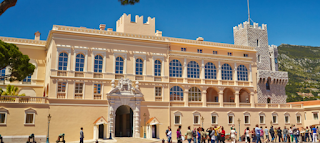The Great China Wall - One of the wonder of the World
The history of the Great Wall of China began when fortifications built by various states during the Spring and Autumn (771–476 bc) and Warring States periods (475–221 bc) were connected by the first emperor of China, Qin Shi Huang, to protect his newly founded Qin dynasty (221–206 bc) against incursions by nomads from Inner Asia. The walls were built of rammed earth, constructed using forced labour, and by 212 bc ran from Gansu to the coast of southern Manchuria.
Later dynasties adopted different policies towards northern frontier defense. The Han (202 bc – 220 ad), the Northern Qi (550–574), the Jurchen Jin (1115-1234), and particularly the Ming (1369–1644) were among those that rebuilt, re-manned, and expanded the Walls, although they rarely followed Qin's routes. The Han extended the fortifications furthest to the west, the Qi built about 1,600 kilometres (990 mi) of new walls, while the Sui mobilised over a million men in their wall-building efforts. Conversely, the Tang (618–907), the Song (960–1279), the Yuan (1271–1368), and the Qing (1644–1911) mostly did not build frontier walls, instead opting for other solutions to the Inner Asian threat like military campaigning and diplomacy.
Although a useful deterrent against raids, at several points throughout its history the Great Wall failed to stop enemies, including in 1644 when the Manchu Qing marched through the gates of Shanhai Pass and replaced the most ardent of the wall-building dynasties, the Ming, as rulers of China.
The Great Wall of China visible today largely dates from the Ming dynasty, as they rebuilt much of the wall in stone and brick, often extending its line through challenging terrain. Some sections remain in relatively good condition or have been renovated, while others have been damaged or destroyed for ideological reasons,[3] deconstructed for their building materials, or lost due to the ravages of time.[4] For long an object of fascination for foreigners, the wall is now a revered national symbol and a popular tourist destination.



Comments
Post a Comment
Please share your thoughts with us!